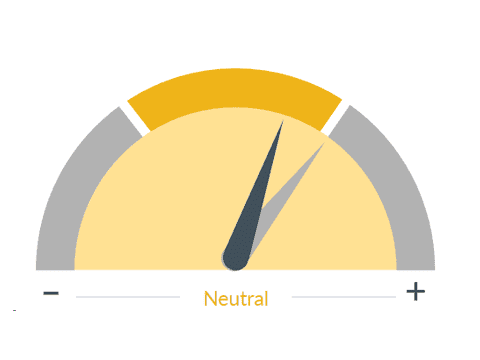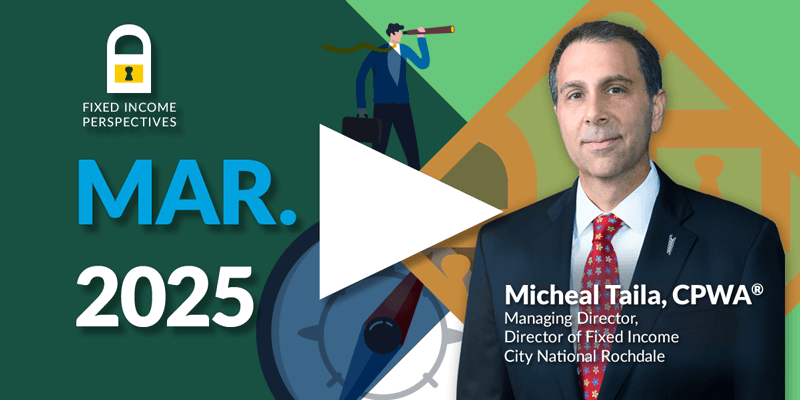
CNR Speedometers®
August 2024
Forward-Looking Six to Nine Months
TRANSCRIPT
The past two months have been a reminder of how quickly sentiment can shift and perspectives can change. Just a month ago, major stock indices were at record highs and a modest broadening in market participation was underway. Investors fully embrace a “soft landing” scenario as a controlled slowdown in growth alongside cooling inflation had the Federal Reserve on course to begin cutting rates in September.
But it can't be that easy. Following a string of weaker-than-expected economic data, especially on the jobs front, there has been a shift in investor bullishness and comfort with the equity markets. Concerns about whether the Fed has fallen behind the curve have gripped markets, and recession fears are rising. The S&P 500 has pulled back, and the tech-heavy NASDAQ 100 is now in correction territory. We've also seen a large rotation away from growth into value in dividend-paying stocks.
Overall, the market has held it well, with returns still at 14% this year, and we continue to believe that a broadening in participation is a welcome development. The bond market is also reflecting recent data, as treasury yields have approached their lows for the year. And through the futures market, we can see more than 100 basis points of cuts from the Fed are now implied before the end of 2024.
This to us is reminiscent of November or December of last year when the market was expecting seven Fed cuts and a potential recession. From our perspective, landings are always bouncing, even the soft ones, and the data has been and will remain choppy. So, the weight of our analysis still points to an economy transitioning to a slower, more normal rate of growth. And the addition of 114,000 jobs is hardly cause for panic.
The important question to ask is whether the weakness in employment will overshoot and turn into a chronic issue. We think the evidence at this point says no.
Over the past three months, the economy has added an average of 170,000 jobs, and a big proportion of the increase in the unemployment rate has been driven by people coming back into the labor force. Hurricane Beryl also impacted the numbers. A 4.3% level of unemployment should raise an eyebrow, but in the context of the broader economy, we believe it is less threatening as consumer spending remains strong and corporate earnings are flush.
As we pointed out last month, we had a few Speedometers® we were keeping an eye on, and we have made changes this month. We believe these changes are supportive of an economy that will continue to slow over the second half of 2024 but maintain its stability.

■ Previous Month ■ Current Month
Inflation
What we see
While a slow, persistent rise in prices is consistent with a healthy, growing economy, a rapid increase in inflation, especially if unanticipated, can be harmful. Inflation means higher consumer prices, which often slows sales and reduces profits.
Dial 1: Inflation, 2:37— So, starting with the positive shifts, inflation is clearly on a downward path. Core consumer prices have cooled considerably between Q1 and Q2, and our forecast remains for inflation to continue to fall. The easing labor market will also put more downward pressure on nominal wage growth, services inflation, and housing costs. And declining inflation is supportive of real income gains and should begin to provide relief for lower-income households, which have shown signs of early stress.
Second, the Fed is ready to pivot. The market expects cuts to begin at the September meeting. And while inflation remains important, the Fed is now focused on the other part of its mandate, which is full employment. And given the current numbers we just walked through; they do have all they need to justify cuts.
We believe the highest probability does remain two cuts this year, and easing Fed will be favorable for financial markets.

■ Previous Month ■ Current Month
Consumer Sentiment
What we see
How consumers feel about their overall financial health as well as that of the economy on the short and long term. This is an important indicator, as the consumer is the largest driver of the U.S. economy.
Dial 2: Consumer Sentiment, 3:30— On the negative side, shifting to the left, consumer sentiment continues to struggle. The shift to the left is primarily due to market-based sentiment and investor bullishness.
While it has not fallen substantially, the downward moves in the equity market are likely to have an impact on the consumer. High prices and elevated interest rates are still weighing on the collective psyche of households. And worries about the labor market and election uncertainty are ever present.
However, we think the implications for consumer spending are limited. The link between confidence and consumption has loosened in recent years, and households have recorded robust spending growth despite low confidence measures. We also believe that housing is under pressure. Housing is the most interest-rate-sensitive sector of the economy, and it will benefit from easing mortgage rates ahead, but we don't think that rates will drop enough to offset slowing activity.

■ Previous Month ■ Current Month
Housing / Mortgages
What we see
Housing is an important indicator of the overall economy and a key driver of investment and job growth. We look at such things as starts, permits, foreclosures, delinquencies, and bank lending to assess the sector's health.
Dial 3: Housing/Mortgages, 4:21— If you look at the data, housing completions have been trending lower. Single-family permits and starts have also dropped. In addition, home builder sentiment has fallen for three straight months to its lowest level since December. It's important to keep in mind that home prices will continue to stay high due to demand. So, we believe the weakness in housing will likely show up less in prices and more in activity, which has a greater impact on Real Gross Domestic Product (GDP).
So as the market continues to move and we get more data, other Speedometers on our radar include the job market and interest rates. But we are holding off on changes the earning season plays out, and we would like to see more data to understand the recent moves in employment.
It is clear to us that markets have entered a period of higher volatility, and that may continue in the near term. After the strong pace of gains seen over the past year, a correction is certainly possible. And in many ways, we are seeing that in the tech sector.


